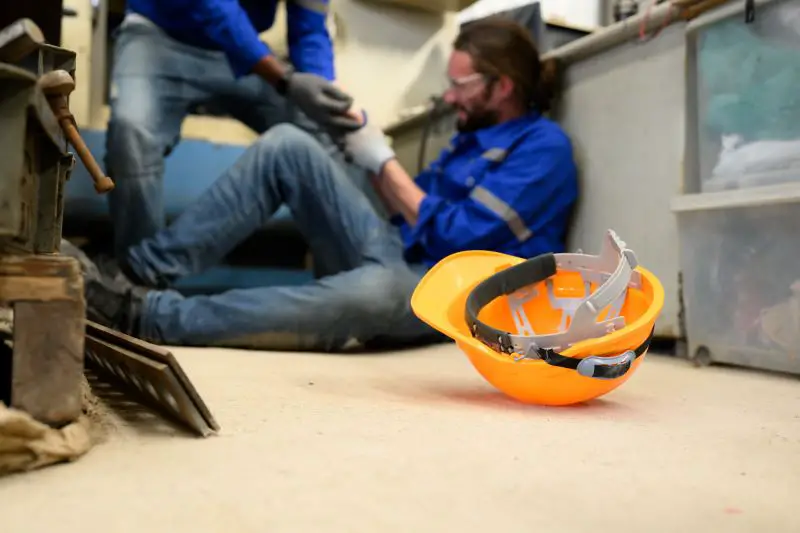Click here to get this post in PDF

Slip and fall accidents remain one of the most common and preventable incidents that occur in business environments. These accidents can lead to severe injuries, legal disputes, and financial burdens for companies. As a result, it is essential for businesses to prioritize safety measures that protect employees and customers alike. By understanding the causes of these accidents and implementing proactive strategies, organizations can create a safer environment and reduce their liability.
Understanding the Causes of Slip and Fall Incidents
According to www.accidentlawelite.com,slip and fall incidents often occur due to common hazards found in various environments. Wet floors, uneven surfaces, and inadequate lighting are frequent culprits that can catch even the most cautious individuals off guard. For example, spills in food service areas or entryways during rainy weather can create hazardous conditions. Moreover, poorly maintained flooring can lead to trips and falls. Identifying these risks is the first step in preventing accidents.
Seasonal changes also contribute to slip and fall incidents. During winter, icy walkways and snowy entrances pose significant risks to both employees and customers. In the summer, rain can create slippery conditions indoors and outdoors. By recognizing how weather impacts safety, businesses can prepare and implement appropriate preventive measures to keep their premises secure throughout the year.
The Legal Landscape: Implications for Businesses
Understanding the legal implications of slip and fall accidents is crucial for any business owner. Liability laws vary by location, but generally, businesses have a duty to provide a safe environment for their employees and customers. If an accident occurs due to negligence, the business may be held responsible for any resulting injuries or damages. This can lead to costly lawsuits, increased insurance premiums, and reputational damage.
To mitigate the financial consequences of slip and fall lawsuits, businesses should familiarize themselves with local regulations and take proactive steps to comply. This may include regular maintenance of the premises, clear signage indicating potential hazards, and prompt response to any reported incidents. By staying informed and acting responsibly, businesses can protect themselves from legal ramifications while fostering a safer environment.
Proactive Measures: Creating a Safe Environment
Creating a safe environment requires a combination of innovative solutions and consistent maintenance practices. One effective strategy is to invest in anti-slip flooring, which provides added traction and reduces the likelihood of slips. Businesses can also use smart mats equipped with sensors that detect moisture and alert staff to potential hazards in real time. These technologies not only enhance safety but also demonstrate a commitment to employee and customer welfare.
Regular safety audits and employee training play a vital role in maintaining a secure workplace. Conducting routine inspections allows businesses to identify and address hazards before they lead to accidents. Additionally, training employees on safe practices and emergency response can create a culture of safety within the organization. When employees are aware of potential risks and know how to mitigate them, they contribute to a safer environment for everyone.
Leveraging Technology to Enhance Safety
Advancements in technology offer innovative solutions to enhance workplace safety. For instance, businesses can utilize surveillance cameras to monitor high-traffic areas and identify potential hazards before accidents occur. Similarly, installing motion sensors that trigger warning lights or sounds when someone approaches a slippery area can serve as an effective deterrent.
Moreover, some companies have adopted artificial intelligence (AI) and machine learning to analyze patterns of slip and fall incidents. By identifying trends and hotspots within their premises, businesses can take targeted action to improve safety. Case studies of companies that successfully implemented these tech solutions demonstrate how investing in safety technology can reduce incidents and promote a culture of accountability.
Creating a Culture of Safety
Fostering a culture of safety is essential for any organization aiming to prevent slip and fall accidents. Leaders should prioritize safety by making it a core value within their company. This includes encouraging open communication about safety concerns and actively involving employees in safety initiatives. By creating an environment where employees feel empowered to speak up, businesses can identify potential risks before they lead to accidents.
Additionally, seeking employee feedback on safety measures can lead to improvements that benefit everyone. Conducting surveys or holding safety meetings provides an opportunity for staff to voice their opinions and share their experiences. When employees feel heard and valued, they are more likely to engage in safety practices and contribute to a culture of prevention.
Furthermore, recognizing and rewarding safe behavior can reinforce this culture. Implementing incentive programs that celebrate employees who consistently adhere to safety protocols not only boosts morale but also encourages others to follow suit. Acknowledging efforts, whether through verbal praise, safety awards, or team celebrations, fosters a shared commitment to maintaining a safe workplace. As employees witness the tangible benefits of prioritizing safety, they become more invested in the overall well-being of their organization.
Conclusion
In conclusion, preventing slip and fall accidents is a multifaceted challenge that requires a proactive approach from businesses. By understanding the common causes of these incidents, navigating the legal landscape, and implementing innovative strategies, organizations can create a safer environment for their employees and customers. Leveraging technology and fostering a culture of safety further enhances the effectiveness of these measures. Ultimately, prioritizing safety not only protects individuals but also secures the long-term success of the business. Taking these steps ensures that businesses can thrive while minimizing the risks associated with slip and fall accidents.
You may also like: 10 Health and Safety Must-Haves to Avoid Work Accidents
Image source: elements.envato.com
